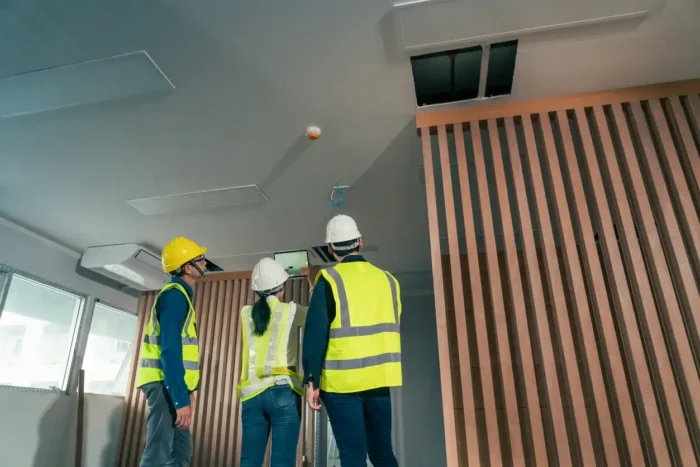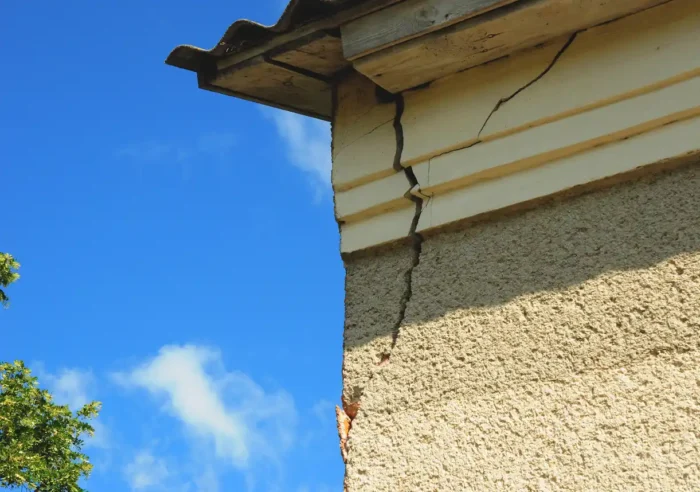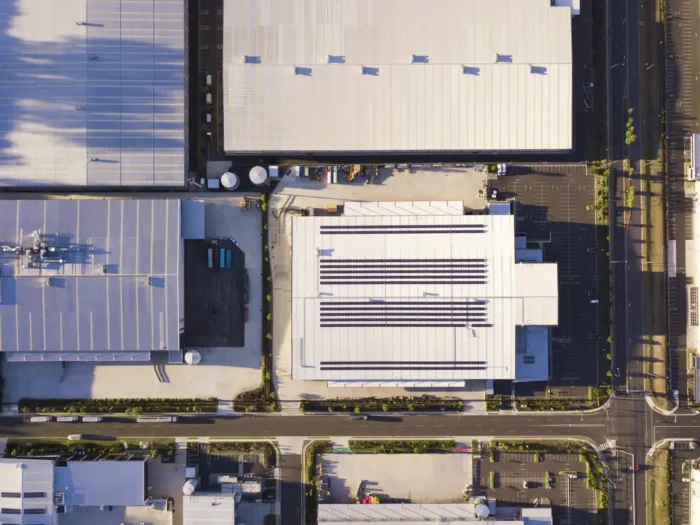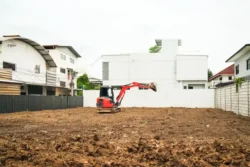How to conduct the most thorough pre-purchase inspections
Published
April 29, 2025
Published
April 29, 2025

If you’re serious about property investment, whether commercial or residential, you already know that due diligence is everything. That means spending a considerable amount of time on your site inspection before you buy, helping you uncover the risks and—most importantly—ensuring you understand how to mitigate them.
At Properties & Pathways, we believe the best investments aren’t just stumbled upon but are created through deep insight into your targeted asset. Here’s our brief guide to getting your site inspections right from the very beginning.
These tips are not exclusive to commercial property investors but are certainly more relevant to them. Residential investors, stick with us, as we’ll list some of the key items to look for in your next house purchase.
Note: This is by no means an exhaustive list of items to conduct on your site inspection. This blog post is for informational purposes only, not to be considered advice, and only serves to provide awareness of the detailed manner in which property investors should conduct their initial investment research.
Skip to:
Why due diligence can be the most important part of the buying process

A property might look the part from the curb. But unless you know exactly what you’re buying, your investment will look far more like a gamble.
A thorough due diligence process uncovers risks early enough that you can address them, budget for them or walk away entirely (as we have done many a time). It also spots opportunities that others miss, things like future development potential, reclassification possibilities or hidden value in surplus land.
High quality due diligence can be what separates hopeful investors from successful ones.
What to check for during your on-site inspection
These are just a few items to keep in mind when you conduct your on-site inspection. Of course, each individual property will have its own list of items to consider, and most importantly, this list is by no means exhaustive.
For commercial properties
- Structural cracks: Check for cracking in walls, floors and around roller doors in industrial assets. Cracks can signal bigger foundation issues.
- Fire safety systems: Confirm the existence (and consistent maintenance) of extinguishers, hose reels, sprinklers, fire alarms and even emergency lighting.
- Floor load capacity: In warehouses, assess whether floors show cracking or spalling under heavy loads.
- Roof condition: Look for loose sheeting, cracks, rust or evidence of previous repairs. Roof failures are expensive.
- Access and truck circulation: For industrial assets, check that large vehicles can easily access the site, particularly for industrial or logistics properties.
- Drainage: Inspect stormwater management, as pooling water near entrances or driveways is a red flag.
- Power supply: Check the site’s electrical capacity. Upgrading later can be costly.
- Amenities: Inspect the condition of bathrooms, kitchens and office areas, as poor amenities can deter tenants—especially in a tenant market.
- Existing tenant fit-outs: Note any tenant improvements and understand which fixtures are owned by the tenant or will be owned by you.
For residential properties

- Roof and guttering: Look for rust, leaks, blocked gutters and broken tiles or sheets.
- Moisture signs: Inspect ceilings, walls and flooring for water stains, bubbling paint or damp smells — all signs of potential leaks or rising damp.
- Windows and doors: Open and close every window and door — sticking or uneven movement can reveal structural problems.
- Cracking: Hairline cracks might be cosmetic (and need only a simple fix), but wider or uneven cracks could point to subsidence or serious structural issues.
- Plumbing: Run the taps, flush the toilets and check under the sinks for leaks. Trust your nose too, as bad smells could signal bigger problems.
- Electrical: Test light switches, power points and look for outdated switchboards or exposed wiring.
- External structures: Inspect sheds, retaining walls and fences for stability and ensure they are all compliant. This goes for any decks or pergolas—make sure they’ve been approved by the local council.
- Neighbourhood factors: Walk the street, checking noise levels, traffic, nearby businesses and general upkeep of surrounding properties. This goes for night time too.
- Pest signs: Look for termites, chewed timber or pest droppings in roof spaces and under the house.
A thorough inspection will also help reduce your potential need for capital expenditure items down the road. Repairs and maintenance on a property are almost certain, but the extent of those repairs might all depend on the work you’ve done before placing the asset under contract.
Again, this list is just the tip of the iceberg. With this post, our goal is to simply show that appearances can be deceiving. Always do your own research and due diligence, or find the investment experts who will for you.
What to consider beyond the physical property

It’s not just the physical items that can make or break your investment. Consider everything on paper, too—from the existing lease agreements to the past environmental reports. During your due diligence period, everything needs to go under your microscope.
Environmental due diligence
Industrial sites, older commercial properties and even some residential blocks might carry environmental risks. Bring in the experts for soil and groundwater testing where necessary, and look at the past site uses and prior environmental reports—even if the agent or vendor tells you everything’s fine.
Title, zoning and planning
Confirm title details, easements and any restrictions on the use of the land.
It’s crucial you don’t just rely on the snapshot of the property as it stands, but to also consider the bigger picture: how will it be positioned in the future, perhaps when you’re looking to offload the asset? Speaking of, check for upcoming developments nearby that could impact the property’s future value, for better or worse.
Lease and tenant analysis
Review the lease terms carefully: expiry dates, rent escalations, outgoings responsibilities. It’s on you to understand the tenant covenants, financial health and the property’s occupancy history. Again, this could be time to engage the professionals. With the right legal advisor at your disposal, you’ll increase your chances of understanding whether everything is in order.
This is the part of the DD process where you may consider how the current tenant mix suits the property and its precinct. Opportunities may be found here, where a lease close to expiry could mean upgrading to a new tenant (or of course extending the lease agreement to secure a longstanding tenant that will continue to bolster the property value). Tenants, after all, are the lifeblood of your commercial property.
Site potential and future flexibility
Confirm the actual land boundaries and measurements.
Look for surplus land, subdivision potential or zoning upgrades that might allow more intensive uses in future. We’ve done this on many occasions, because—as I’m sure you can now see—many investors will miss the crucial details and the golden opportunities that can translate to success in real estate.
Opportunities do exist. They’re out there, and it’s in your due diligence that you’ll most likely uncover them. While there are plenty of trustworthy agents and vendors in Australia’s transparent property market, never rely on the brochure or the agent’s word alone: do your own research.
How our due diligence delivered an exceptional asset (at a discount)
We don’t just preach about due diligence—we rely on it. Take our acquisition of 16 Thomas Road, Kwinana Beach, WA in 2023. At first glance, this industrial property appeared risky. It carried a “Possibly Contaminated” classification, which had already deterred most buyers before they even got through the front gate. Indeed, we’d even walked away from the investment at one point, until we saw an opportunity.
We engaged environmental assessment experts to undertake extensive soil and groundwater testing. Their investigations confirmed there were no contamination exceedances, aligning with the site’s historical reports.
Confident in the asset’s fundamentals, we acquired the property at a 14-per cent discount to market value—this was because of the property’s perceived risk shared by the market. Within three months, we successfully reclassified the property as ‘Remediated for Restricted Use’, eliminating the cloud that had hung over its value.
The investment now boasts a long-term tenant with nine years of income secured, plus 3,000 square metres of excess developable land. This wasn’t luck: it was the result of disciplined, thorough due diligence.
There’re no shortcuts in real estate

In property, what you don’t know will hurt you. But when you take the time to investigate properly, understand the risks and see the hidden potential, you can truly set yourself apart from other buyers.
Thorough due diligence is one of the pillars we stand by, with every acquisition we make. It’s why our investors trust us with their capital.
Looking for a property investment company who understands the importance of due diligence? Get in touch with us today, for an obligation-free call about investing alongside us in one of our upcoming property syndicates.






